If f(x)=2x1 and g(x)=3x2 then find (fog) (x) A 2(3x1) B 2(3x2) C 3(2x1) D 3(3x1) Medium Open in App Solution Verified by Toppr Correct option is C 3(2x1)It must be in terms of f (x)∵ ƒ(x) = ( x 1 ) / ( x 1 ) (1) ∴ ( x 1 ) ƒ(x) = x 1 ∴ x ƒ(x) ƒ(x) = x Thank you for registering One of our academic counsellors will contact you within 1 working dayCorrect Answer Option (d) Solution f (g(x)) = 2 − 1 − 2x For given function to be defined, 1 − 2x ≥ 0 ⇒ x ≤ 21 And 2 − 1 − 2x ≥ 0 ⇒ 1 − 2x

14 If 2x 3x 1 Then The Values Of X Are Equal To Chegg Com
F(x)=x-1/x 1 then f(2x)
F(x)=x-1/x 1 then f(2x)-For example, if f is a function that has the real numbers as domain and codomain, then a function mapping the value x to the value g(x) = 1 / f(x) is a function g from the reals to the reals, whose domain is the set of the reals x, such that f(x) ≠ 0 The range of a function is the set of the images of all elements in the domainSimple and best practice solution for f(x)=2x1 equation Check how easy it is, and learn it for the future Our solution is simple, and easy to understand,




If F X Log 1 X 1 X Then Prove That F 2x 1 X 2f X Brainly In
f (x) = 2x^2x3 g (x) = x 1 (f*g) (x) = f (x)*g (x) = (2x^2 x 3)* (x 1) = 2x^3 x^2 3x 2x^2 x 3 = 2x^3 x^2 4x 3 All real numbers can be plugged into this function, so its domain is that of all real numbers 👍Question If f(x) = 2x 1 and g(x) = (x – 1)/2 , then f(g(x)) = So, I know what to do Basic plug and chug I also know that the answer is X, I just don't know how to get to the answer I plug in g(xExperts are waiting 24/7 to provide stepbystep solutions in as fast as 30 minutes!* See Answer *Response times may vary by subject and question complexity Median response time is 34 minutes for paid subscribers and may be longer for promotional offers
Solution for f(x) = {x 2 if x > 1 (2x – 1 if x < 1 then f '( 2,4 ) is then f(2,4) is 1,2 and f is not continuous None of the choices 1,2 and f is ️⇒ x = y(1 x^2) ️⇒ yx^2 – x y = 0 N e e d a G F if anyone Girl single then com eygeweubexi id 247 154 9306 pas पूर्ण कोण किती मापाचा असतो?Evaluate f(x h) f(x)/h when f(x) = 3x 1 Find the vertex of f (x) = 2x^2 8x 9 Find f(g(x)) = f g when f(x) = x^2 2 and g(x) = x 3 Find f^1(x) when f(x) = 5x 2 Find f^1 (f(x)) when f(x) = 8 x Question Find f(3) when f(x) = 5x 1 If f(x) = 2x 5 and g(x) = x^2 4, then find f(x) middot g(x)
The value of f(x 1) = x² 4 Stepbystep explanation Given, f(x 1) = x² 4x 8 => f(x 1 1) = (x 1)² 4(x 1) 8 => f(x) = x² 2x 1 4x 4 8Explanation The function g(x) is equal to 4x 5, and the notation 2g(x) asks us to multiply the entire function by 2 2(4x 5) = 8x 10 We then subtract 3, If f (x) = x1/x1 then find the value of f (2x) Find the answer to this question along with unlimited Maths questions and prepare better for JEE examination




If F X 2e 2x 2 1 Then F X 2e 4z E 2x 2 1 Chegg Com
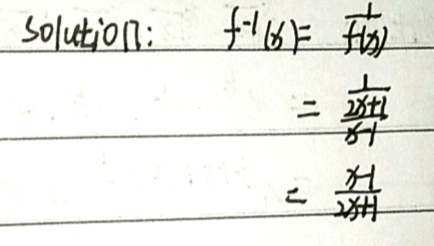



If Fx 2x 1 X 1 eq 1 Then F 1x Equals To Gauthmath
Please answer this question if you know the answer then only answer else reported what will be the answer ☹️☹️☹Let's use the quadratic formula to solve for x Starting with the general quadratic the general solution using the quadratic equation is So lets solve ( notice , , and ) Plug in a=1, b=2, and c=1 Negate 2 to get 2 Square 2 to get 4 (note remember when you square 2, you must square the negative as well This is because )Get stepbystep solutions from expert tutors as fast as 1530 minutes Your first 5 questions are on us!
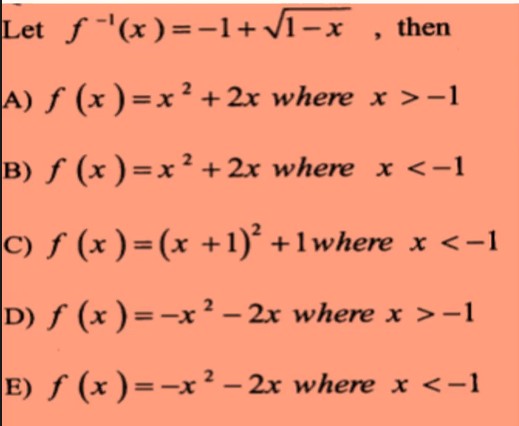



Answered Let F X 1 Vi X Then A F X Bartleby




Ex 1 3 6 Show F X X X 2 Is One One Find Inverse Of F
Questions from Relations and Functions 1 The domain of the function 2 If f(x) = 1 x2 4x 4 − 4 x4 4x3 4x2 4 x3 2x2 , then f(1 2) is equal to 3 The domain of the function 4 Iff( x 1 2x − 1) = 2x, X ∈ N, then the value of is equal to f(2) is equal to Answer to If f(x) = x2 3 and g(x) = (2x 1)1/2 then (f o This problem has been solved! Let \\(f(x) = \\begin{cases} ax^21 &, x>1 \\\\ x\\frac{1}{2} & , x \\leq 1 \\end{cases},\\) Then, f(x) is a = 2 B a = 1 C a = 0 D a = 1/2




If F X Log 1 X 1 X Then Prove That F 2x 1 X 2f X Brainly In




Example 16 Let F X X2 And G X 2x 1 Find F G Fg F G
Simple and best practice solution for f(x)=2x1 equation Check how easy it is, and learn it for the future Our solution is simple, and easy to understand, so don`t hesitate to use it as a solution of your homework If it's not what You are looking for type in the equation solver your own equation and let us solve it Ex 12, 10 Let A = R − {3} and B = R − {1} Consider the function f A → B defined by f (x) = ( (x − 2)/ (x − 3)) Is f oneone and onto?The statement "if f(x) = 1" tells me you are defining the function f to have the property that f(x) = 1 regardless of the value of x This is a particularly uninteresting function It is like a broken bathroom scale that always gives the same weight regardless of who stands on it Now look at f(f(x)) = 2x 4 What I see is f(f(x)) = 2x 4




14 If 2x 3x 1 Then The Values Of X Are Equal To Chegg Com




Harder One A Function Is Defined By F X X 3 X 5 Find The Inverse And State The Domain And Range Of F X And F 1 X Ppt Download
It can be written as, f (x) = ` { (1 x , 0 ≤ x ≤ 1) , (1 x, 1< x ≤ 2) , ( 3 x, 2 < x ≤ 3)}` When, 0 ≤ x ≤ 1 Then , `f (x) = 1 x ` Now when , 0 ≤ x ≤ 1 then ,1 ≤ x 1 ≤ 2 Then , `f (f (x))` = 1 (1 x ) = 2 x ∵ 1 ≤ f (x) < 2 When ,1 < x ≤ 2 Then , f (x) = 1 x Now when , 1 < x ≤ 2 then,2 < x 1 f(x) = {(3x)/(1x)} 23x taking log on both sides log(fx) = (2 3x) log {(3x)/(1x)} log(fx) = (2 3x) log(3x) log(1x) Now differentiate f'(x) /f(x) = (2Previous page to draw the graphs of f(x 2),f(x 2), f(2x), f(1 2x), and f(x) We could alternatively write these functions as (x 2)2,(x 2)2, (2x) 2,(x 2) ,and(x) The graphs of these functions are drawn on the next page Notice on the next page that the graph of (x)2 is the same as the graph of our original function x 2 That's because when
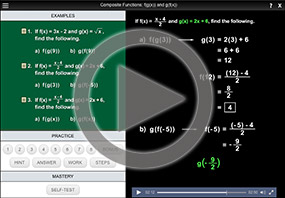



Composition Of Functions Composing Functions With Functions



If F X 2f 1 X 3x X 0 And S X R F X F X Then S Sarthaks Econnect Largest Online Education Community
If f x x 2 2 x 3 then f1 a 2 b 2 c 3 d 7 find f 4 6 If f (x)=x2−2x3, then f(1)=______ A – 2 B 2 C 3 D 0 7 Find f ( −4 ) when f (x)=x2−5x−1 A 37 B 35C – 5 D – 3 8 Given f(x)=x23 and g(x)=2x−1 f(x) = 2x Checking oneone f (x1) = 2x1 f (x2) = 2x2 Putting f(x1) = f(x2) 2x1 = 2 x2 x1 = x2 Hence, if f(x1) = f(x2) , x1 = x2 ∴ function f is oneone Onto f(x) = 2x Let f(x) = y, , such that y ∈ R 2x = y x = 𝑦2 Since y is a real number, Hence 𝑦2 will also be a real number So, x will also be a real number, ie, x ∈ RIf F(X) = X2 − 3x 4, Then Find the Values of X Satisfying the Equation F(X) = F(2x 1) 0 Department of PreUniversity Education, Karnataka PUC Karnataka Science Class 11




If 2f X 3f 1 X X 2 1 Then F X Is



Www Jstor Org Stable
The notation f −1 is sometimes also used for the inverse function of the function f, which is not in general equal to the multiplicative inverse For example, the multiplicative inverse 1/(sin x) = (sin x) −1 is the cosecant of x, and not the inverse sine of x denoted by sin −1 x or arcsin x Only for linear maps are they strongly related To ask Unlimited Maths doubts download Doubtnut from https//googl/9WZjCW If `f(x)=(x1)/(x1)` then `f(2x)` is equal toDivide f2, the coefficient of the x term, by 2 to get \frac{f}{2}1 Then add the square of \frac{f}{2}1 to both sides of the equation This step makes the left hand side of




If F Is A Function Such That F 0 2 F 1 3 F X 2 2f X F X 1 Then F 5 Is Youtube




If F X 2x 1 Then F 3 Brainly Com
If f(x) = ∫(5x8 7x6)/(x2 1 2x7)2dx, (x ≥ 0) and f(0) = 0, then the value of f(1) is (1) 1/4 (2) 1/2 (3) 1/4 (4) 1/2The domain of the function 2 If f(x) = 1 x2 4x 4 − 4 x4 4x3 4x2 4 x3 2x2 , then f(1 2) is equal to 3 The domain of the function 4 Iff( x 1 2x − 1) = 2x, X ∈ N, then the value of is equal to f(2) is equal to 5 If n(A) = 5 and n(B) = 7, then the number of relations on A × B isThe trick here, such as it is, is simply realizing that we can use 2 as our ingredient if we figure out how to express it in the form 2x1 2x1 = 2 2x11 = 21 2x=3 2x/2 = 3/2 x=3/2 If we set x=3/2, then 2x1 = 2, so we can see that f (2) = f (2x1) = x when x = 3/2, or f (2) = f (2 (3/2)1) = 3/2



If F X X 1 X 1 Then Show That I F 1 X F X Ii F 1 X 1 F X Sarthaks Econnect Largest Online Education Community




If F Is A Real Function Defined By F X X 1 X 1 Then Prove That F 2x 3f X 1 F X 3
If f (x) = x1/x1 then f (2x) is ?Divide \frac {f1} {f}, the coefficient of the x term, by 2 to get \frac {1} {2}\frac {1} {2f} Then add the square of \frac {1} {2}\frac {1} {2f} to both sides of the equation This step makes the left hand side of the equation a perfect square Square \frac {1} {2}\frac {1} {2f}8 Assume f ( x 1) = f ( x 2) Then x 1 2 1 = f ( f ( x 1)) = f ( f ( x 2)) = x 2 2 1 and so x 2 = ± x 1 Then from f ( f ( − x)) = f ( f ( x)) we conclude that f ( − x) = ± f ( x) for all x Define g 0, ∞) → 0, ∞) by g ( x) = f ( x) For x with g ( x) = f ( x) we have




Ex 1 3 6 Show F X X X 2 Is One One Find Inverse Of F




If F X Log 2 1 X 1 X Then F 2x 1 X 2 Is Equal To A F X B 2f X C 2f X D F X 2
About Press Copyright Contact us Creators Advertise Developers Terms Privacy Policy & Safety How works Test new features Press Copyright Contact us CreatorsIf v (x) is larger of e x − 1 and (1 x) lo g (1 x) for x ϵ (0, ∞) then l o g (v (8) 1) is equal to View solution Let f ( x ) = 2 x tan − 1 x , g ( x ) = lo g ( 1 x 2 ) , h ( x ) = sin x u ( x ) = x − 6 x 3 1 2 0 x 4 then Determining Whether the Inverse Function Is a FunctionGraphically, f −1(x) = −x 1 2 −x would look like graph { (x1)/ (2x) 10, 10, 5, 5} In the graph above, you can see that the x and y values approach the vertical and horizontal asymptotes Since it resembles that of an exponential graph, there is only one y value for an x value




If F X X 1 X 1 Then F 2x Is Equal To




If F X Log 1 X 1 X Then F 2x 1 X 2 Is Equal To
Graph f (x)=x^22x1 f (x) = x2 2x − 1 f ( x) = x 2 2 x 1 Find the properties of the given parabola Tap for more steps Rewrite the equation in vertex form Tap for more steps Complete the square for x 2 2 x − 1 x 2 2 x 1 Tap for more steps Use the form a x 2 b x c a x 2 b x c, to find the values of a a, b bF ( 2 x − 1) = f ( 2 ( 2 x − 1) 1) f ( 2 x − 1) = f ( 2 x 1 − 1) Note that the general solution is f ( x) = Θ ( log 2 ( x 1)) , where Θ ( x) is any periodic function with unit period So if the domain of f can be restricted to f ( − 1, ∞) → R , then f can be nonconstant and can be Θ ( log 2 F (g (2)), g (x)=2x1, f (x)=x^2 \square!




What Is F 2x




If F X X 2 3x 4 Then Find The Valueof X Satisfying The Equation F X F 2x 1 Brainly In
Justify your answer f (x) = ( (x − 2)/ (x − 3)) Check oneone f (x1) = ( (x"1 " − 2)/ (x"1" − 3)) f (x2) = ( (x"2 " − 2)/ (x"2" − 3)) Putting f (x1) = f (x2) ( (x"1 " − 2)/ (x"1" − 3)) = ( (x"2 " − 2)/ (x"2" − 3)) Rough Oneone Steps 1See the answer See the answer See the answer done loadingOne way of solving is f(x) = log(1x/1x) f(x) = log(1x) log(1x) To find the given function replace x with (2x/1x^2) f(2x/1x^2) = log(1(2x/1x^2)) log(1(2x/1x^2)) f(2x/1x^2) = log((x^212x)/(1x^2))log((x^212x)/(1x^2)) On simpli




If F X X 1x 1 Then F 2x In Terms Of F X Is




D 1 E 30 1 Iff X X 2x 1 Then F 2 A Chegg Com
F(x) = x2 1 x3 4x is a rational function, it is continuous everywhere in its domain, which is everywhere that the denominator is nonzero The denominator is zero at x= 0 and x= 2 6 If f(x) = (x2 3x)(6x5 2x8), compute f0(1) Solution f0(x) = (2x 3)(6x5 2x8) (x2 3x)(30x4 16x7) f0(1) = 5 4 4 14 = 76 7 For f(x) = 3 p x5 6 p 5 x3Algebra Graph f (x)= (2x1)/ (x1) f (x) = 2x − 1 x − 1 f ( x) = 2 x 1 x 1 Find where the expression 2x−1 x −1 2 x 1 x 1 is undefined x = 1 x = 1 Consider the rational function R(x) = axn bxm R ( x) = a x n b x m where n n is the degree of the numerator and m m is the degree of the denominator 1
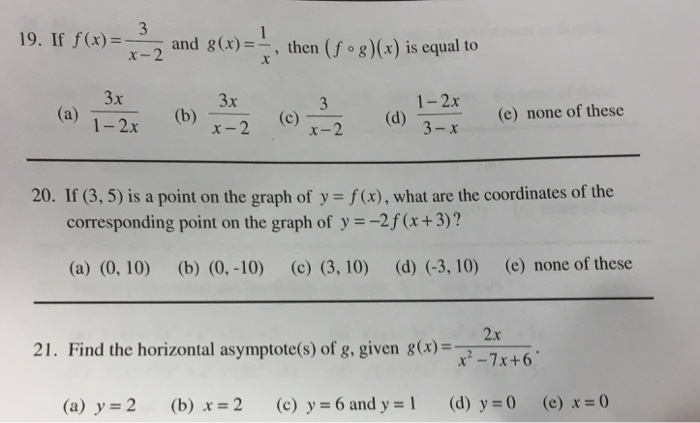



If F X 3 X 2 And G X 1 X Then F Chegg Com




Ma8151 Engg Ineering Mathematics I Mcq Sine Function Mathematics




Let F R R Be Such That F 2x 1 F X For All Xe R I Math




If F Mathbb R Setminus 0 1 To Mathbb R Satisfies F X 2f Left Frac 1 X Right 3f Left Frac X X 1 Right X Then 8f 4 Mathematics Stack Exchange




If F X X 3 K 2 X 2 2x For All X And If It Is An Odd Function Find K Maths Relations And Functions Meritnation Com



If F X 1 X X 1 2x X X 1 X 1 X 3x X 1 X X 1 X 2 X 1 X X 1 Then F 100 Is Equal To Sarthaks Econnect Largest Online Education Community




D 1 E 30 1 Iff X X 2x 1 Then F 2 A Chegg Com



If F X 1 2x 1 2x X In N Then What Is The Value Of F 2 Equal To Quora




Rd Sharma Solutions For Class 12 Maths Updated For 21 22 Chapter 2 Functions




1 X X 1 Iff X 1 X Then F 2x Where Represen Math




If F X X 1 X 1 Then Prove That F 2x 3f X 1 F X 3 Brainly In
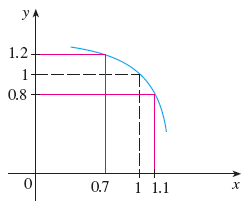



Use The Given Graph Of F To Find A Number D Such That If X 1 D Then F X 1 0 2 Home Work Help Learn Cbse Forum



If Y F 2x 1 X 2 1 And F X Sin 2 X Then Dy Dx Sarthaks Econnect Largest Online Education Community




If F X 2x 1 3x 2 Then Fof 2 Is Equal To Youtube



2




Let F X X 2 2x 3 X 1 When X 1 K When X 1 Youtube
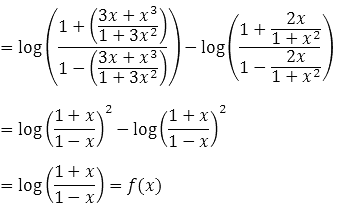



If F X Log 1 X 1 X Where 1 X 1 Then F 3x X 3 1 3x 2 F 2x 1 X 2 Is Equal To




Limits By Factoring Video Khan Academy



Q Tbn And9gcq3k4crna5aowbckdwotcepc7srb Ubkhdcqsvwzwhqp8plminb Usqp Cau




33 If F X 2x 1 And G X 3x 1 Then F G X Chegg Com



2




If F X X 1 X 1 Then Prove That F 2x 3f X 1 F X 3




Section 2 7 One To One Functions And Their Inverses Pdf Free Download
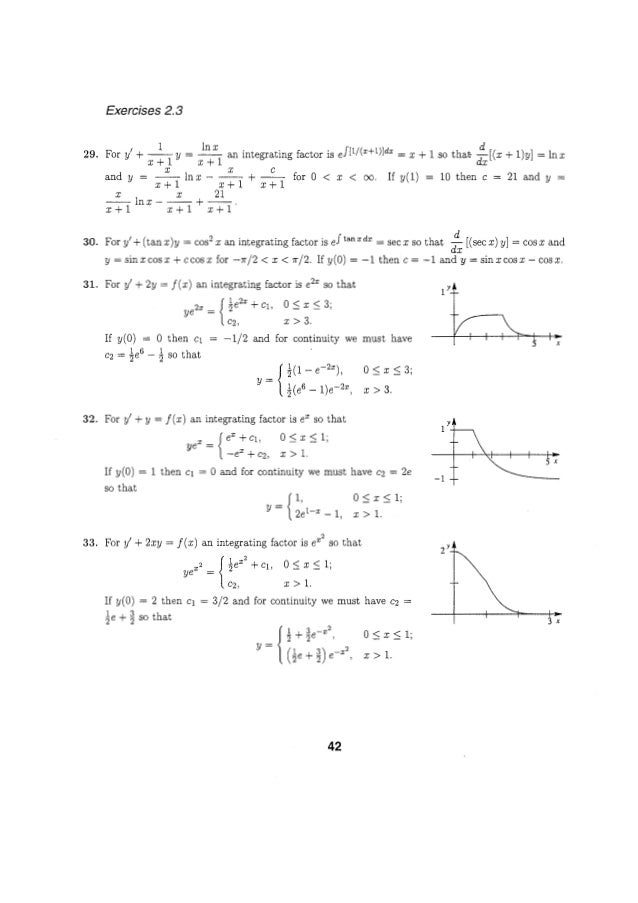



Solucionarioecuacionesdiferencialesdenniszill7aedicion P




If The Function F X X 2 1 X 1 When X 1 K When X 1



If F And G Are Two Real Valued Functions Defined As F X 2x 1 G X X2 1 Then Find Studyrankersonline




If F 1 X X 2 1 Then F 2 H Is



If F X 1 X 1 X X 1 1 X 1 Then The Value Of F 2x Will Be Where Shows The Greatest Integer Function Sarthaks Econnect Largest Online Education Community




Inverse Functions And Logarithms Pdf Free Download



If Math F 2x 1 X Math What Is Math F 2 Math Quora




Misc 4 Show F X X 1 X Is One One Onto Miscellaneous




If F X Satisfies The Relation 2f X 1 X X 2 For All Real X Then Find F X Youtube



If F 2x 1 2x 1 For All Real Numbers X Then F X Socratic




Part B Set Theory What Is A Set A Set Is A Collection Of Objects Can You Give Me Some Examples Ppt Download




If F X X 1 X 1 Then Find F X F 1 X Brainly In




Misc 4 Show F X X 1 X Is One One Onto Miscellaneous



Www Portnet Org Cms Lib6 Ny Centricity Domain 276 1st and 2nd derivative test 1 Pdf



If F X Logo 1 X 1 X Then F 2x 1 X 2 Is Equal To Sarthaks Econnect Largest Online Education Community




12 F X X 1 Then Lim A X B 2x C 2 D 1 E 0 13 Chegg Com




If F X 2f 1 X X 2 2 X R Then F X Is Given By



If F X 3x 5 What Is The Value Of F 2x 1 Quora




If 2f X 3f 1 X X 2 1 Then F X Is Youtube
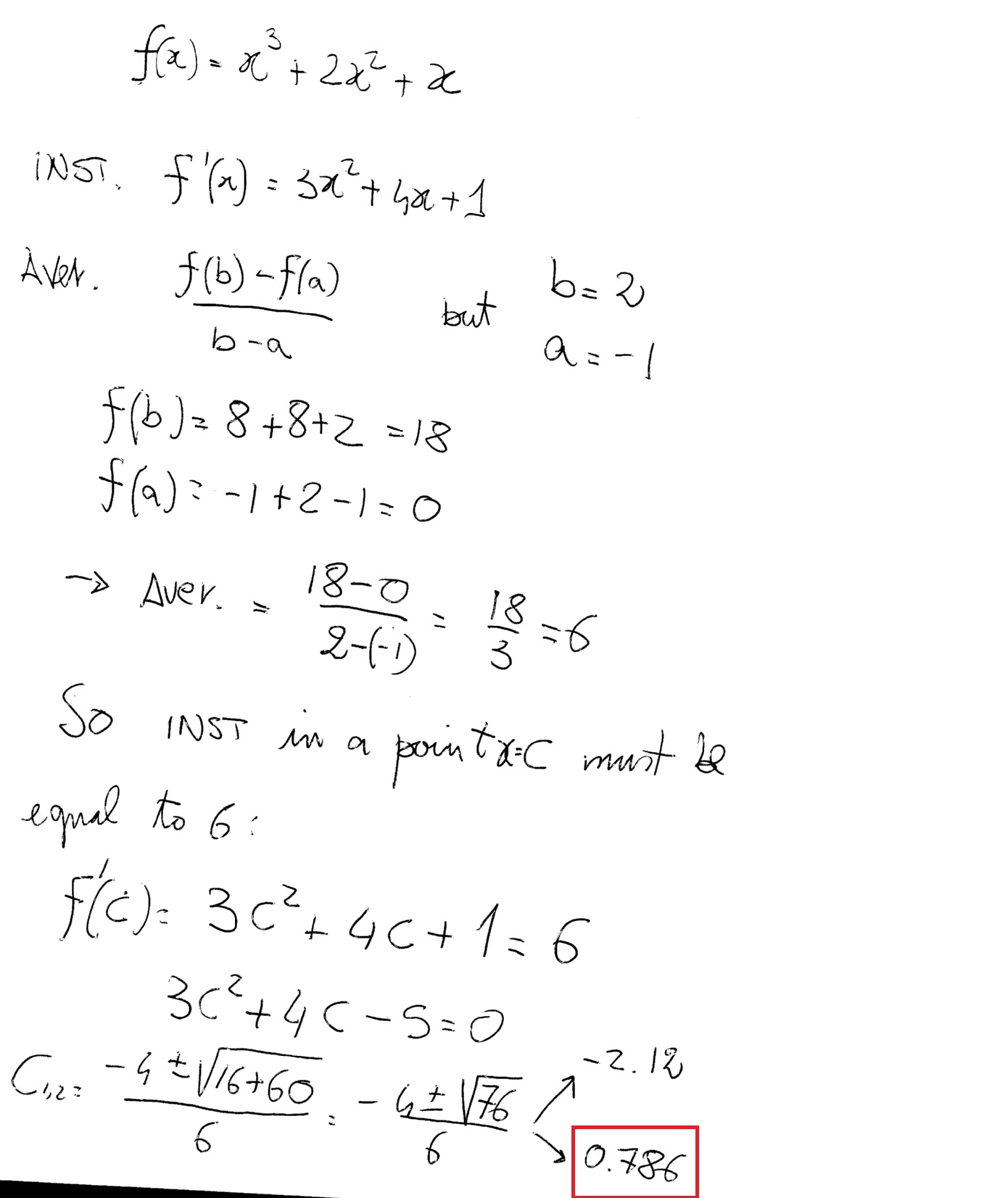



If F Is Defined By F X X 3 2x 2 X How Do You Find The Value Of X When The Average Rate Of Change Of F On The Interval X 1 To X




If Fx 2 3x 4 Then Find The Value Of Satisfying Fx F 2x 1 Scholr




Suppose The Function F X F 2x Has The Derivative 5 At X 1 And Derivative 7 At X 2 The Derivative Of The Function




If F X 2x 1 3x 2 Then F F 2 Is Equal Lto



Let F R R Be Defined By F X 2x X Then Find F 2x F X F X Here X Means Modulus Function Of X I Want Detailed Step By Step



2




Sat Ii Math Level 2 Test 05 Solution 1 If 8x 12 K 3 2x 3 For All X Then K A 1 4 B 3 C 4 D 12 E 24 8x 12 K 3 2x 3 Ppt Download




Some Companions Of Ostrowski Type Inequality For Functions Whose Second Derivatives Are Convex And Concave With Applications Topic Of Research Paper In Mathematics Download Scholarly Article Pdf And Read For Free




If F X X 1 X 1 Then Prove That F 2x 3f X 1 F X 3
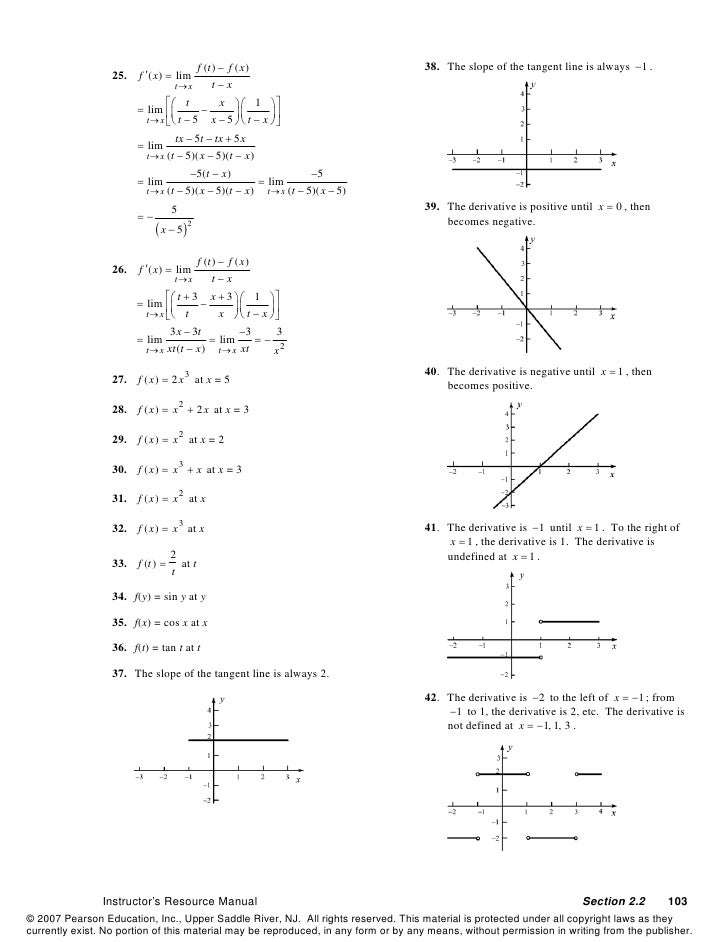



Solucionario De Purcell 2




Let The Function F Be Defined By F X 2x 1 1 3x Then F 1 X Is




X 4 If F X 2x 7 And G X 2x 1 Then Chegg Com



What Is F X And G X If F 2x 1 G X 1 X And F 2x 1 2g X 1 2x 2 Is Satisfied Quora




Let F X X 1 2x 2 7x 5 Then Youtube




If F X X 1 X 1 Then F 2x Is Equal To Maths Relations And Functions Meritnation Com




92 Then F X X 1 1 1 Of F X 1 1 Then




Mathematics Today 17 9 September 000 Flip Book Pages 51 93 Pubhtml5




Let F X X 1 X 1 Then F F X Is A 1 X B 1 X C 1 X 1 D 1 X 1 Brainly In




If F X 2x 1 If X Gt 1 And X 2 1 If 1 Lt X Lt 1 And If F 1 F 3 F X F 2 F Youtube




Let F X 1 2x 2 3x 1 Then Find The Value Of F X 2




If The Function F R R Defined By F X 4 X4 X 2 Then Show That F 1 X 1 F X And Hence Deduce The Value Of F 14 2f 12 F 34




If F X X 1 X 1 Find F 2x In Terms Of F X
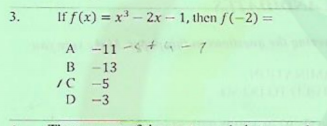



Answered 3 If F X X 2x 1 Then F 2 Bartleby




If F X 1 2x 1 X 1 2 Then Show That F F X 2x 1 2x 3 Provided That X 3 2dot
.jpg)



Consider The Function F X Max X2 1 X 2 2x 1 X Where 0 Mathematics Topperlearning Com Euhyqt44
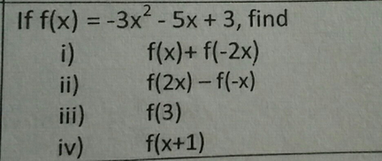



If F X 3x2 5x 3 Find I F X F 2x I F 2x F X Il Scholr




If F X X 1 X 1 Then F 2x Is Equal To Youtube




If F X 1 X 1 X 2 And G X 1 X 2 Then Points Of Discontinuity Of F G X Are




Functions Questions Math Page 19 Kunduz



Www Spart5 Net Site Handlers Filedownload Ashx Moduleinstanceid 2539 Dataid Filename Barrons ch 1 solutions Pdf



2




Let F X 2x 1 Then The Number Of Real Number Of Real Values Of X For Which The Three Unequal Numbers F X F 2x F 4x Are In G P Is 1 B 2 C 0 D None Of



Www3 Nd Edu Apilking Math Work Old exams Exams s13 M final sp13 solution Pdf



Www Math Utah Edu Wortman 1050 Text If Pdf



X X Answer



Http Www Adelaide Edu Au Mathslearning System Files Media Documents 19 09 Function Notation Revision Pdf



0 件のコメント:
コメントを投稿